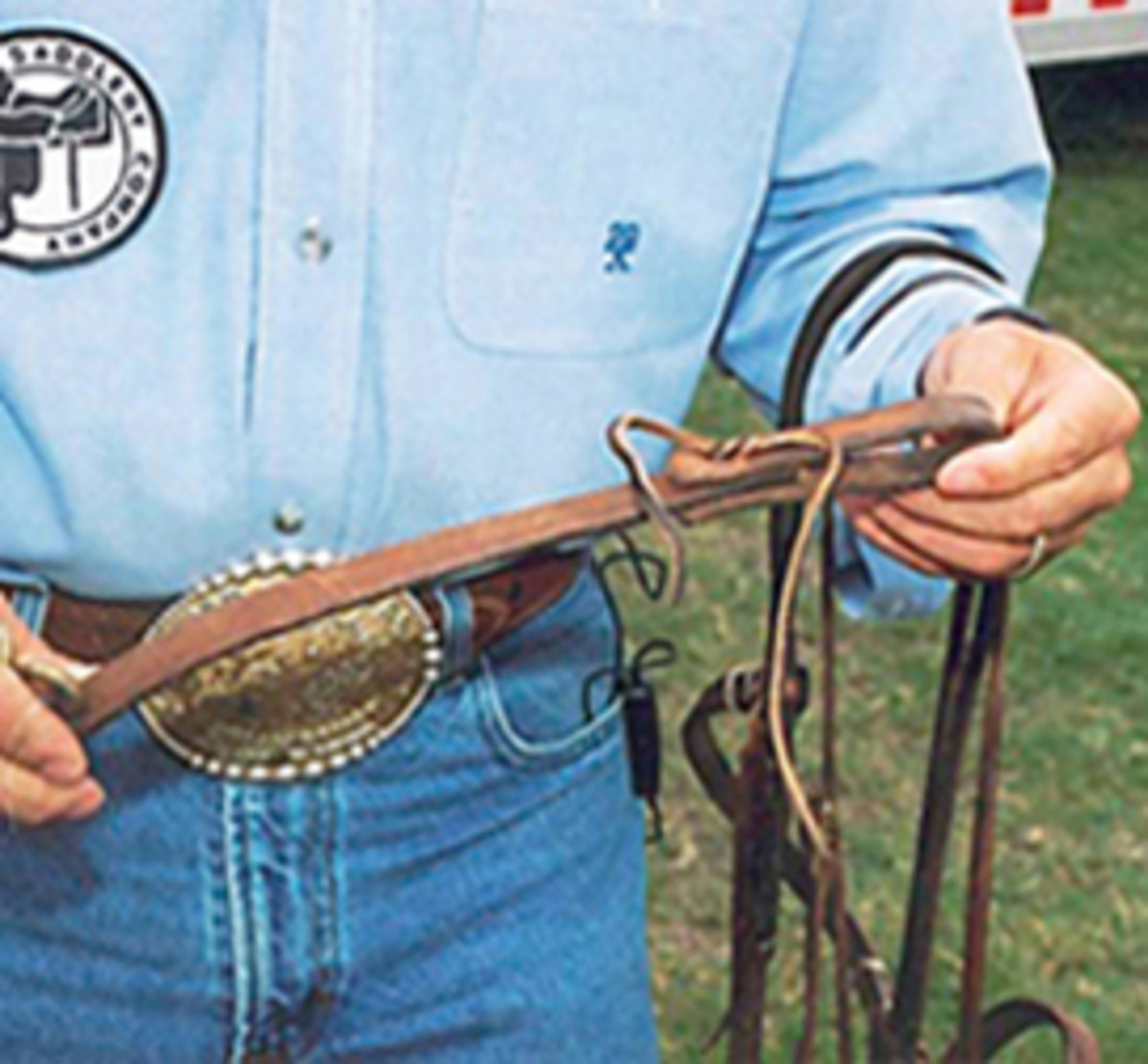Having reliable, working equipment is a big part of being a champion. If that’s hard to believe, try having some of it break, malfunction, or sore your horse when you’re roping for the big money.
NFR-qualifying heeler Kirt Jones is fresh from his first Finals, where he finished 13th in the world (along with header and partner Steve Purcella). Over the years, Jones has found the equipment that works best for him, and shares more here in this second part.
See Spin To Win, February 2004, for part one.

I prefer leather. I use as much leather equipment as I can. It may eventually get old, brittle, and break, but overall it’s going to last longer than just about anything if you take care of it.
I like what I call ‘water ties’ on my reins. If a horse sets back and pulls when he’s tied, it’ll break at the water tie and save the long part of your rein. I grew up on a ranch where we always used split reins, so I learned to make a single rein out of one split rein by making a water tie for one end, then I’d just add a snap. I stay away from Chicago screws because the rein will break in the middle, and I typically don’t like Nylon because it won’t break at all.


I also like water ties on my headstalls, to save my reins, headstall, and horse’s mouth if my horse pulls back. There’s a certain way I like to tie these. On a headstall, I like the holes to be far enough apart that the water ties can lay flat. I take each piece of leather and wrap one around the back and one around the front for reinforcement (photo a, above). The ranch cowboys taught me this, because it keeps the leather from stretching where your water ties work loose, and this sort of tie rarely comes undone (photo b above).


I like these adjustable wide Nylon tie down straps. I can size them to any horse, and I like the spacing of the holes. This is one instance where I like something besides leather, because a leather strap gets salty and wet under the horse’s chest, which wears it out fast.
I like a flexible bit that isn’t harsh. I’m really light handed. My horse stops hard enough already. A single chain curb strap has more bite anyway. I’d recommend a flat curb chain for heavier-handed folks. If you use a leather curb chain, check that for fit too, because-always remember-leather stretches.


I like a deeper seat, and I had this one made with some wither so I can brace against it. I want my rear down deep. This all makes me feel stabilized with my shoulders and swing, which helps with powering my swing. When you get up to rope fast, you have to immediately put the tip on the end of your hand. If your body isn’t grounded to the saddle, it’s harder to feel your tip because your body’s moving around. But, if you can get a hold of your saddle with your feet and get down in it, that helps. When your body is locked down, there’s more power in your throw.
Speaking of getting a hold with your feet, I like big stirrups where I can push my feet down in and tell where they ride. You can see I ride toward the inside of my stirrups, get my heel against them, and my foot against the inner wall. That way, I feel secure, and the stable foundation keeps me from making mistakes. I ride my stirrups a little long and lock down in my saddle. Then, if things happen quickly, I can overpower them or get ahead due to my good foundation. I’ve ridden in other stirrups, like oxbows; those are more for colts where you can get away from a dangerous horse. If you do use those at all, be careful, because your foot can hang up in those when you step off.

I like a wide, two-piece collar that lets a horse breathe. The purpose of the breast collar is to keep the saddle from sliding around. Even the biggest tripping collars are designed to ride on the shoulders-not the neck-to let the horse have his wind. Thin collars, or ones that ride too high (on the lower neck versus shoulder area) get in a horse’s windpipe. I’ve even seen this spook a horse and make him buck-especially a head horse. Wider breast collars grab a hold of the shoulders and don’t slide up at all. Without a proper-fitting one, your roping saddle will slide back. As for the strap, I don’t adjust that real tight.
STW










